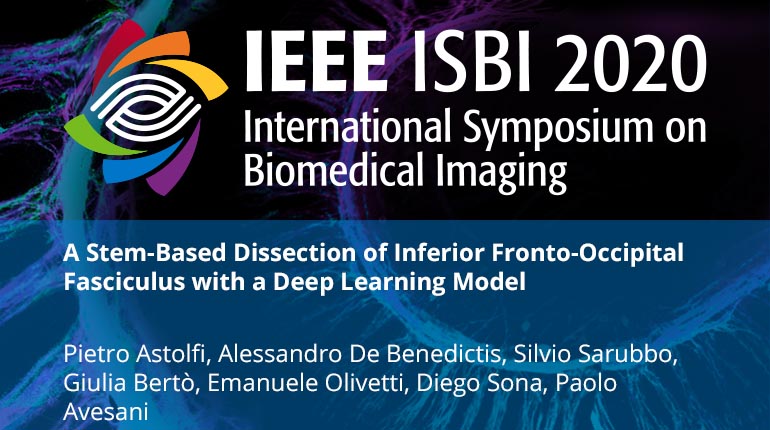
Already purchased this program?
Login to View
This video program is a part of the Premium package:
A Stem-Based Dissection of Inferior Fronto-Occipital Fasciculus with a Deep Learning Model
- IEEE MemberUS $11.00
- Society MemberUS $0.00
- IEEE Student MemberUS $11.00
- Non-IEEE MemberUS $15.00
A Stem-Based Dissection of Inferior Fronto-Occipital Fasciculus with a Deep Learning Model
The aim of this work is to improve the virtual dissection of the Inferior Frontal Occipital Fasciculus (IFOF) by combining a recent insight on white matter anatomy from ex-vivo dissection and a data driven approach with a deep learning model. Current methods of tract dissection are not robust with respect to false positives and are neglecting the neuroanatomical waypoints of a given tract, like the stem. In this work we design a deep learning model to segment the stem of IFOF and we show how the dissection of the tract can be improved. The proposed method is validated on the Human Connectome Project dataset, where expert neuroanatomists segmented the IFOF on multiple subjects. In addition we compare the results to the most recent method in the literature for automatic tract dissection.
The aim of this work is to improve the virtual dissection of the Inferior Frontal Occipital Fasciculus (IFOF) by combining a recent insight on white matter anatomy from ex-vivo dissection and a data driven approach with a deep learning model. Current methods of tract dissection are not robust with respect to false positives and are neglecting the neuroanatomical waypoints of a given tract, like the stem. In this work we design a deep learning model to segment the stem of IFOF and we show how the dissection of the tract can be improved. The proposed method is validated on the Human Connectome Project dataset, where expert neuroanatomists segmented the IFOF on multiple subjects. In addition we compare the results to the most recent method in the literature for automatic tract dissection.
 Cart
Cart Create Account
Create Account Sign In
Sign In





